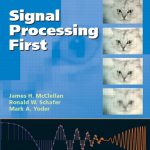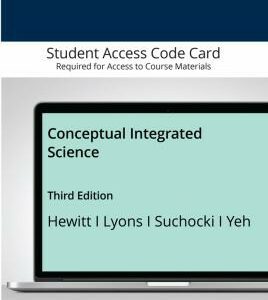Signal Processing First
$273.32
| Title | Range | Discount |
|---|---|---|
| Trade Discount | 5 + | 25% |
- Description
- Additional information
Description
For introductory courses (sophomore/junior) in Digital Signal Processing and Signals and Systems. Text may be used before the student has taken a course in circuits.
For access to Instructor Resource Materials please visit:
http://users.ece.gatech.edu/mcclella/SPFirst/
Please contact your local Pearson Sales Representative for further information.
This text is derived from DSP First: A Multimedia Approach, published in 1997, which filled an emerging need for a new entry-level course not centered on analog circuits in the ECE curriculum. It was also successfully used in 80 universities as a core text for linear systems and beginning signal processing courses. This derivative product, Signal Processing First [SPF] contains similar content and presentation style, but focuses on analog signal processing. Note: DSP First: A Multimedia Approach remains in print for those who choose a digital emphasis for their introductory course.
- Four new chapters on analog signal processing systems, plus many updates and enhancements.
- Creative use of innovative, computer technology—Makes abstract content more accessible, enabling it to reach a wider range of students. Unique features from this work, such as visual learning animations, hands-on demonstrations, and integrated laboratories in multimedia format are widely hailed as essential learning tools for mastering fundamental concepts.
- Many actual signals and sound files can be viewed with a Web browser or imported into MATLAB.
- Archive of hundreds of solved exercises on CD, plus much more.
For introductory courses (sophomore/junior) in Digital Signal Processing and Signals and Systems. Text may be used before the student has taken a course in circuits.
For access to Instructor Resource Materials please visit:
http://users.ece.gatech.edu/mcclella/SPFirst/
Please contact your local Pearson Sales Representative for further information.
This text is derived from DSP First: A Multimedia Approach, published in 1997, which filled an emerging need for a new entry-level course not centered on analog circuits in the ECE curriculum. It was also successfully used in 80 universities as a core text for linear systems and beginning signal processing courses. This derivative product, Signal Processing First [SPF] contains similar content and presentation style, but focuses on analog signal processing. Note: DSP First: A Multimedia Approach remains in print for those who choose a digital emphasis for their introductory course.
1. Introduction.
2. Sinusoids.
3. Spectrum Representation.
4. Sampling and Aliasing.
5. FIR Filters.
6. Frequency Response of FIR Filters.
7. z-Transforms.
8. IIR Filters.
9. Continuous-Time Signals and LTI Systems.
10. The Frequency Response.
11. Continuous-Time Fourier Transform.
12. Filtering, Modulation, and Sampling.
13. Computing the Spectrum.
<
This best-selling, hands-on, multimedia package provides an introduction to fundamental concepts, specifically discrete-time systems, for beginning engineering students. Created and written by the same well-respected authors, it has been adopted in over 100 institutions worldwide since publication. This class-tested learning package is also widely used as a self-teaching tool to discover more about USP applications, multimedia signals, and MATLAB®. Unique features such as visual learning demonstrations, MATLAB laboratories, and a bank of solved homework problems are just a few of the things that make this an essential learning tool for mastering fundamental concepts in today’s electrical and computer engineering curricula.
Additional information
| Dimensions | 1.00 × 8.70 × 9.30 in |
|---|---|
| Imprint | |
| Format | |
| ISBN-13 | |
| ISBN-10 | |
| Author | |
| Subjects | engineering, higher education, Engineering and Computer Science, Electrical Engineering, Digital Signals and Systems |




